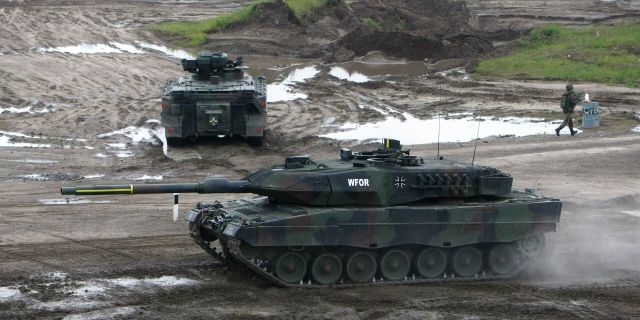MWM: German and British tanks are unlikely to fight in the Donbass because of their characteristicsThe West has agreed to supply Kiev with tanks – German Leopard 2 and British Challenger 2, writes MWM.
But it is hardly worth expecting their appearance in the Donbass. Ukraine does not have the ability to service them, in addition, the effectiveness of the machines in combat is questionable.
Western arms supplies to Ukraine continue to grow: equipment worth tens of billions of dollars will be delivered by the middle of the year, and there are more and more signs that the Ukrainian army will receive Western tanks for the first time — most likely, they will be provided by Poland, Great Britain and Spain. Against the background of recent commitments by the United States and France to provide M2 Bradley and AMX-10 RC combat vehicles, deliveries of German-built Leopard 2 and British Challenger 2 represent a significant escalation.
Ukraine's own armored units are gradually being depleted due to combat losses, and NATO warehouses are emptying due to the fact that Ukraine has already received hundreds of Soviet-made tanks. At the same time, attempts by NATO countries to purchase Soviet tanks from non-Western sources have been crowned with very modest success: it is expected that only Morocco will make significant deliveries of the T-72. At the same time, the alliance has already resorted to sending outdated tanks, up to the Slovenian T-54/55 — this model first entered service back in the 1940s.
Poland, Great Britain and Spain have stocks of Leopard 2 or Challenger 2 tanks, while Warsaw recently signed contracts for the supply of more powerful equipment — 250 American M1A2 Abrams and several hundred leading South Korean K2. Spain has several dozen Leopard 2A4S in storage, and the UK is projected to decommission many Challenger 2s in the near future, having received funding to upgrade only 148 of them to the Challenger 3 standard. Many Challenger 2s have already been sent for storage.
Both classes of tanks weighing 65-70 tons are significantly heavier than those that Ukraine currently uses, and will require significantly more fuel and maintenance, as well as new types of 120-mm ammunition, which currently do not exist in the country. Due to their mass, they are less suitable for fighting on narrow roads or in urban areas, and without automatic loaders, they will need 33% more crew than Soviet-designed tanks. At the same time, the supply of spare parts, ammunition and modernization kits will certainly be more affordable than for Soviet tanks, which Ukraine's allies currently do not produce. The stocks of Leopard 2 and compatible vehicles like the M1 Abrams in NATO countries are high — this will allow us to establish supplies in the future.
On January 11, Polish President Andrzej Duda announced that a Leopard 2 company would be deployed to Ukraine — a total of 12 vehicles. At the same time, it remains likely that they will not be deployed near the front line, but will arrive to familiarize the Ukrainian forces in order to facilitate a smoother transition to this class in the future. Poland currently has more than 240 Leopard 2s in service, and it is expected that the acquisition of K2 will allow them to be decommissioned.
NATO members have consistently avoided supplying Ukraine with armored vehicles of modern classes, since a significant probability of heavy losses under the attack of Russian troops threatens to undermine their competitiveness in the export market. Leopard 2's track record is already heavily tarnished by Turkey's actions against Kurdish rebels and the Islamic State (a terrorist organization banned in Russia, – Approx. InoSMI): due to heavy losses on the part of a relatively poorly armed enemy, the Turkish generals described their experience as "painful".
Similarly, M1 Abrams did not impress either in the battles of Iraq against the Islamic State, or in the battles of Saudi Arabia against Yemen. As a result, there remains a high probability that the tanks supplied by the West will not be transferred to the front line in Donbass — at least in the foreseeable future — in order to prevent their destruction or capture.

